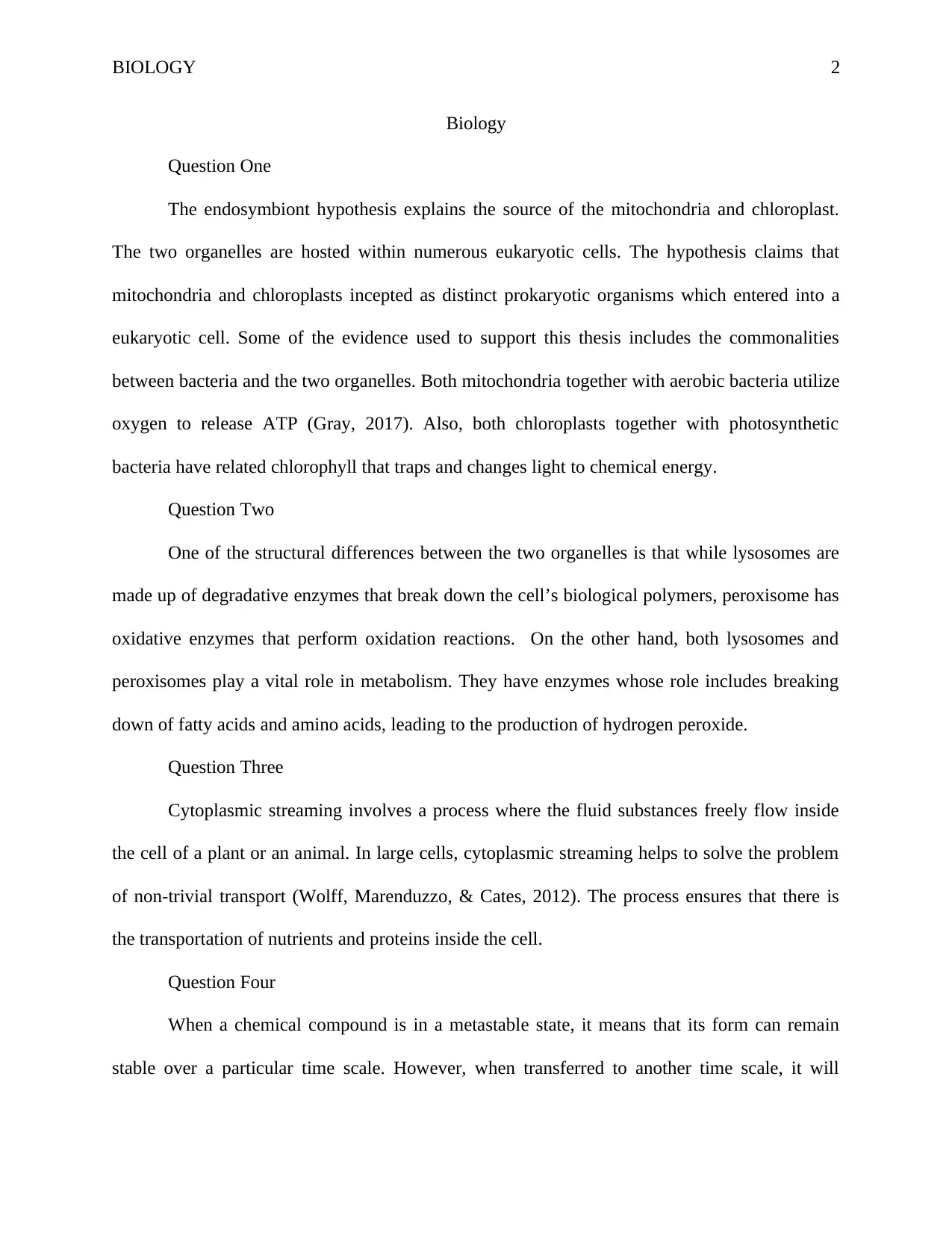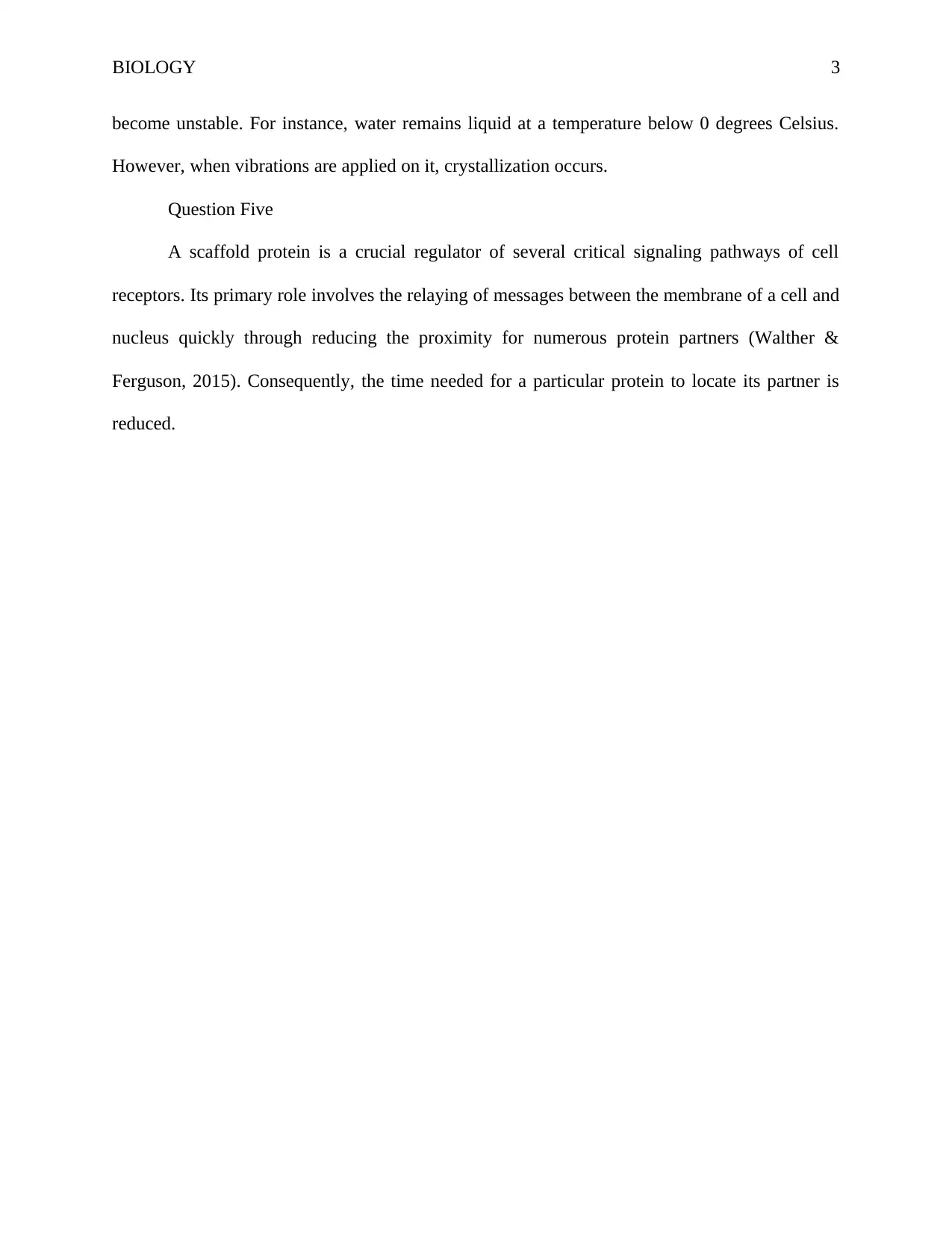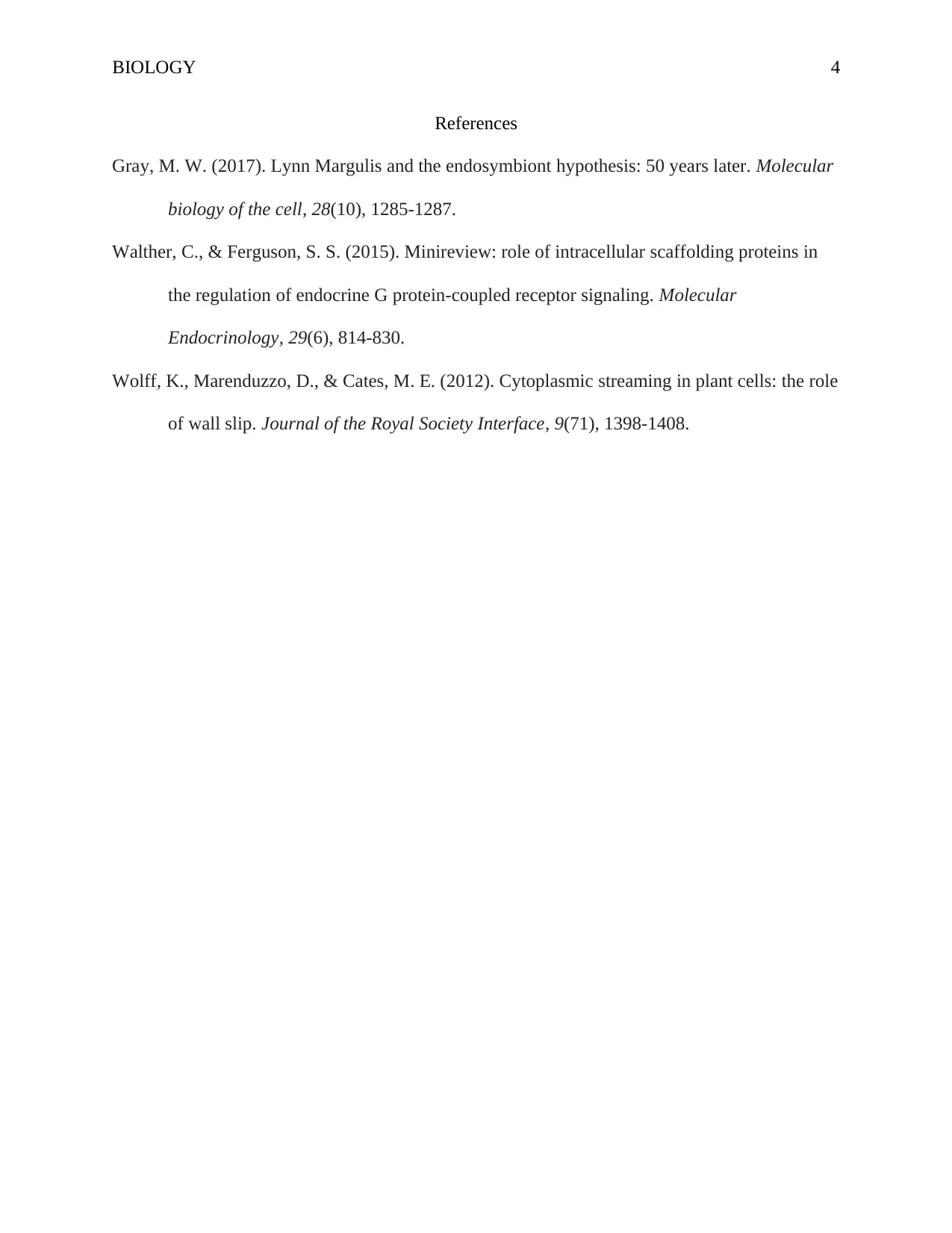Biology Assignment: Endosymbiosis, Organelles, and Cellular Processes
VerifiedAdded on 2022/09/30
|4
|506
|360
Homework Assignment
AI Summary
This biology assignment explores key concepts in cellular biology. It begins with an examination of the endosymbiont hypothesis and the origins of mitochondria and chloroplasts. The assignment then contrasts the functions of lysosomes and peroxisomes, highlighting their roles in metabolic processes. Cytoplasmic streaming is explained, emphasizing its importance in large cells for nutrient and protein transport. The concept of a metastable state is defined, and the assignment concludes by discussing the role of scaffold proteins in cell signaling pathways, emphasizing their function in relaying messages between the cell membrane and nucleus. References are provided to support the information presented.
1 out of 4





![[object Object]](/_next/static/media/star-bottom.7253800d.svg)